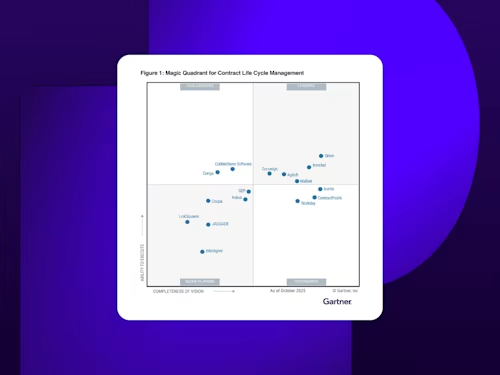
The Importance of Building a Standout Customer Experience
As the chief solutions officer at ResultsCX, a leader in global customer experience management, Ganesh Iyer knows firsthand the challenges and opportunities brands face when designing customer experiences.

Think about the last interaction you had with a business, whether online or in person. Did you make a purchase, request support, or ask a question? If the process was easy and efficient, you may be excited to do business with them again. If it was slow and complicated, you’ll likely take your business elsewhere in the future.
Customer experience (CX) distinguishes good brands from great brands—and, according to McKinsey & Company, brands can even experience triple returns to shareholders by improving customer experience. You recognize an exceptional customer experience when you see it, but when it comes to your own business, deciding where to start can be daunting.
As the chief solutions officer at ResultsCX, a leader in global customer experience management, Ganesh Iyer knows firsthand the challenges and opportunities brands face when designing customer experiences. Docusign sat down with Iyer to learn about the trends shaping the field, how to improve the customer journey, and tips to maximize return on customer experience investments.
Meet evolving customer expectations
In virtually every industry today, customers have a wide selection of vendors. This variety, combined with technology, has made it easier to switch vendors when one fails to meet expectations. “Consumer attachment to a brand isn’t as strong as it was many years ago,” said Iyer. “The switching costs are lower for consumers now.”
Less friction means brands need to step up their game for superior customer experiences to retain customers. This starts with the understanding of the most important expectation consumers have today: anytime and anywhere access to products, services, and information. There are three main areas where companies can meet this expectation:
Communications: “Consumers expect choice in the way they communicate with a brand,” said Iyer. “Leading brands provide consumers with the choice to communicate however they’d like, whether through voice calls, online chats, WhatsApp messages, or emails.”
Customer support: Customers anticipate outstanding interactions with employees. As a result, employees need technology that allows them to quickly and easily provide customers with the information they’re looking for—then go one step further by making that interaction personalized and memorable.
Efficiency: Customers today expect rapid service. Businesses can facilitate speed with technology that provides greater accuracy and reduced turnaround time. “If I’m able to reduce the process cycle time from five hours to one hour, the end consumer can get that result much faster,” said Iyer.
The transformation in agreement management exemplifies this. In the past, creating and signing contracts involved printing paper documents and manually sending paper mail or a fax. Email modernized this system, but employees still had to handle cumbersome, insecure PDF attachments—until Docusign.
“Docusign has revolutionized agreements, and it eliminated the process of manually sending documents back and forth,” said Iyer. “Similarly, there are manual processes in various organizations involving spreadsheets and Word documents that can be done automatically.”
Empower teams to create positive experiences
Like so many who specialize in CX, Iyer believes that automation and artificial intelligence can significantly improve customer experience efficiency. However, Iyer qualifies this: employees still remain essential to creating meaningful connections with customers. Businesses will also need employees to solve high-stakes problems in (highly regulated) industries like healthcare and banking for the foreseeable future.
Front-line employees are part of an entire ecosystem of corporate teams that impact customer experiences, including marketing, sales, and onboarding, as well as community management and customer success. Iyer goes even one step further, pointing out that many businesses overlook another essential team: product managers.
“The people who build products are integral to the customer experience,” said Iyer. “You may have a product that comes out before the market is ready, and therefore it fails. If you see a product that comes in at the right time, it can succeed because it meets current customer needs.”
When given the choice between creating a memorably positive experience or avoiding a memorably negative experience, Iyer emphasizes the importance of the positive. “There are bound to be negative experiences—not every customer is happy with every experience,” he said. “Creating more positive experiences means you’ll have more people saying good things about the company on social media, Trustpilot, and other review sites.”
It’s clear that better customer experience helps you improve the lifetime value of the customer. The brands that provide good quality service improve their NPS, grow their wallet, and retain their consumers for longer.
Ganesh IyerChief Solutions Officer, ResultsCX
Evaluate customer experience investments
It’s common business knowledge that retaining customers is easier, cheaper, and faster than converting new ones. Brands that thrive and grow continually focus on improving their customer satisfaction. Companies from enterprise to rapidly scaling actively monitor customer experience using tools like customer satisfaction score (CSAT) or net promoter score (NPS).
Iyer cautions that while CSAT and NPS are important metrics, they only matter as much as they increase the lifetime value of your customers. “Every investment you make from a customer experience standpoint should lead to higher CSAT and NPS, but should financially lead to higher wallet share, higher margins, or higher lifetime value—some metric to justify the investment.”
A loyal but low-spend customer may not be as valuable as a customer who spends more, and purchases with greater frequency. “Customer segmentation is important here,” said Iyer. “You have to evolve your customer service strategies according to which customers have a higher lifetime value.”
“It’s clear that better customer experience helps you improve the lifetime value of the customer,” said Iyer. “The brands that provide good quality service improve their NPS, grow their wallet, and retain their consumers for longer.”
Technology that automates, streamlines, and supports human interactions can dramatically boost customer experiences—and ROI.
If you’re looking to modernize your agreement process and eliminate friction for your customers and employees, Docusign IAM for CX helps minimize friction across the customer journey to maximize customer reach and drive faster conversions.
Related posts
Docusign IAM is the agreement platform your business needs


